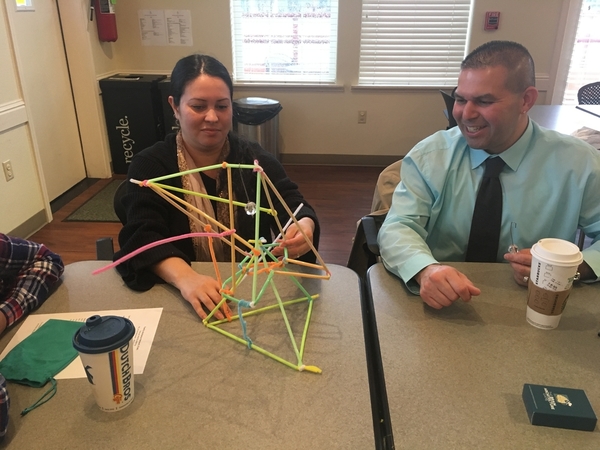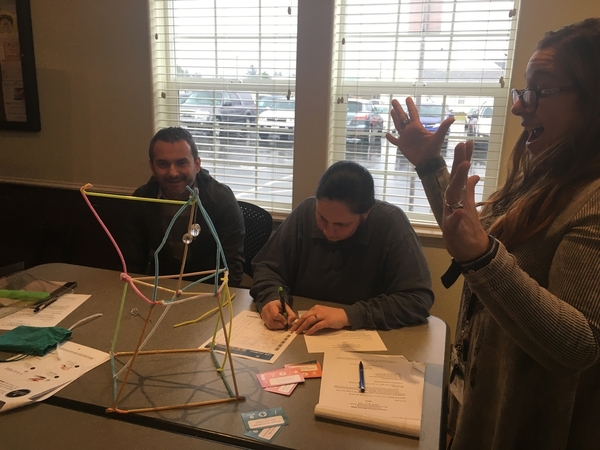The effects of ACEs on the developing brain of a child come to life in a hands-on game developed to engage policy-makers, community leaders, and health providers. Del Norte County Child Abuse Prevention Council (DN CAPC) is bringing this Brain Architecture Game to the community, starting with the Family Assistance Network--a group of service providers who meet once a month to share about local activities.
Groups of four to six gathered around their tables with one goal in mind: To build a brain. Using a mix of pipe cleaners and straws, the groups tried to build the tallest brain, representing functionality, while also ensuring their brains had a sturdy base in order to withstand the stresses they would endure.
 The game started with the roll of a die. Chance determined if they would begin with the supplies necessary to build a sturdy base. From there, Life Experience Cards moved the game forward. If they drew a Positive Experience card, they got a straw and a pipe cleaner to build their brain, but Negative Experience cards come with a pipe cleaner and no straw.
The game started with the roll of a die. Chance determined if they would begin with the supplies necessary to build a sturdy base. From there, Life Experience Cards moved the game forward. If they drew a Positive Experience card, they got a straw and a pipe cleaner to build their brain, but Negative Experience cards come with a pipe cleaner and no straw.
Some groups drew "wild cards" which were determined to be tolerable stress or toxic stress depending on how many Negative and Positive Life Experiences cards the group had drawn in the past. More negative experiences than positive? The experience then becomes toxic, demonstrating concretely just how much of an effect adverse experiences can have on a child's brain.
After the first five years of brain development, weights were added to the structures after Negative Experience cards were drawn. Were the bases strong enough to "bounce back" after these toxic stress experiences? Did these brains have enough protective factors to outweigh their risk factors? Some did and stood tall under the stress life had thrown their way. Other brains wobbled but had cleverly constructed bases that kept them strong. And, yes, some brains did come crashing to the table to the despair of the group.
Afterward, groups had a chance to share from their Life Experience Journal, where they documented each Life Experience Card they had drawn and how it affected the building of their brain. Discussions called to mind some very real situations in their lives and the lives of the people they serve.
The Brain Architecture Game is fun and kinesthetic learning experience that also has a tremendous impact on those who decide to participate. Because it is a physical experience, it ties people to the issue of ACEs and resiliency in an emotional and physical way.



Comments (0)